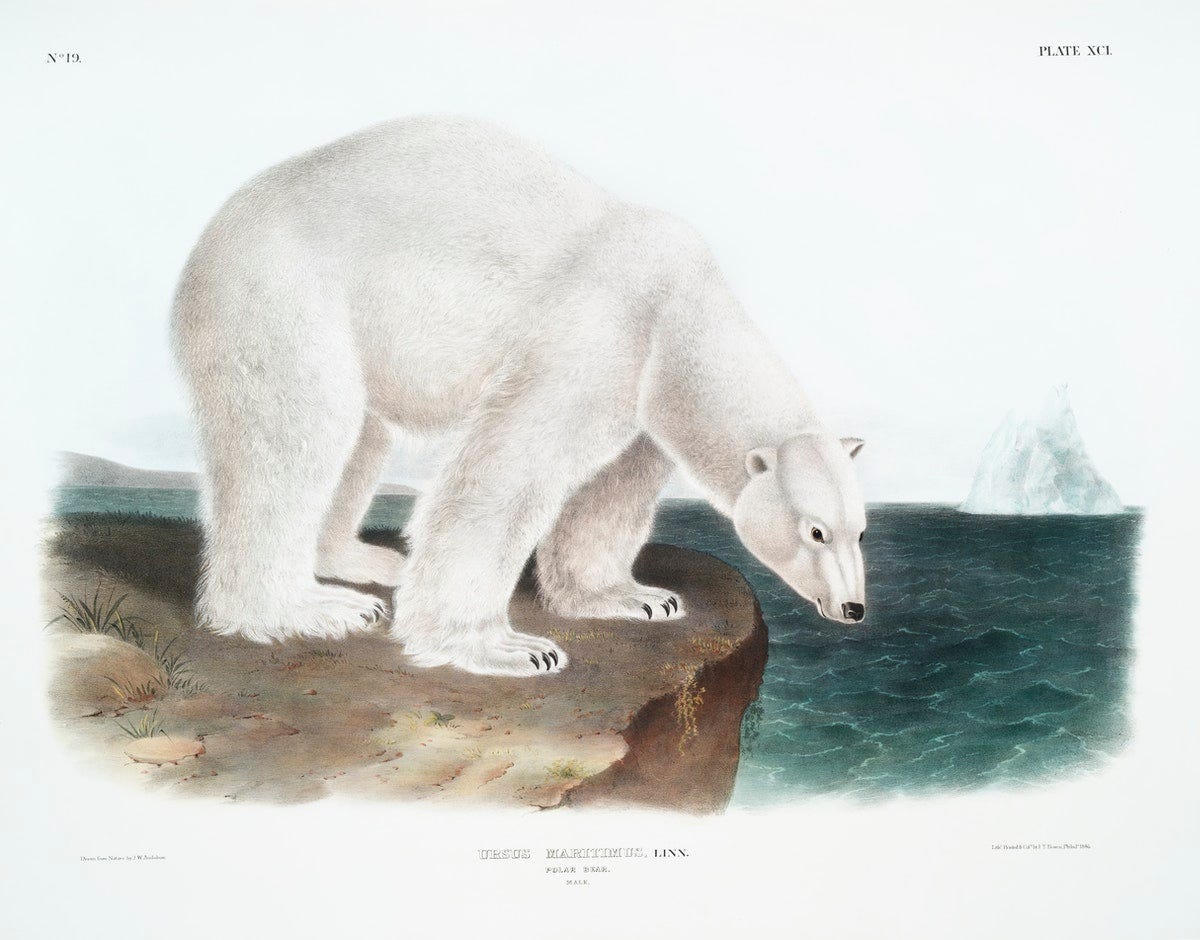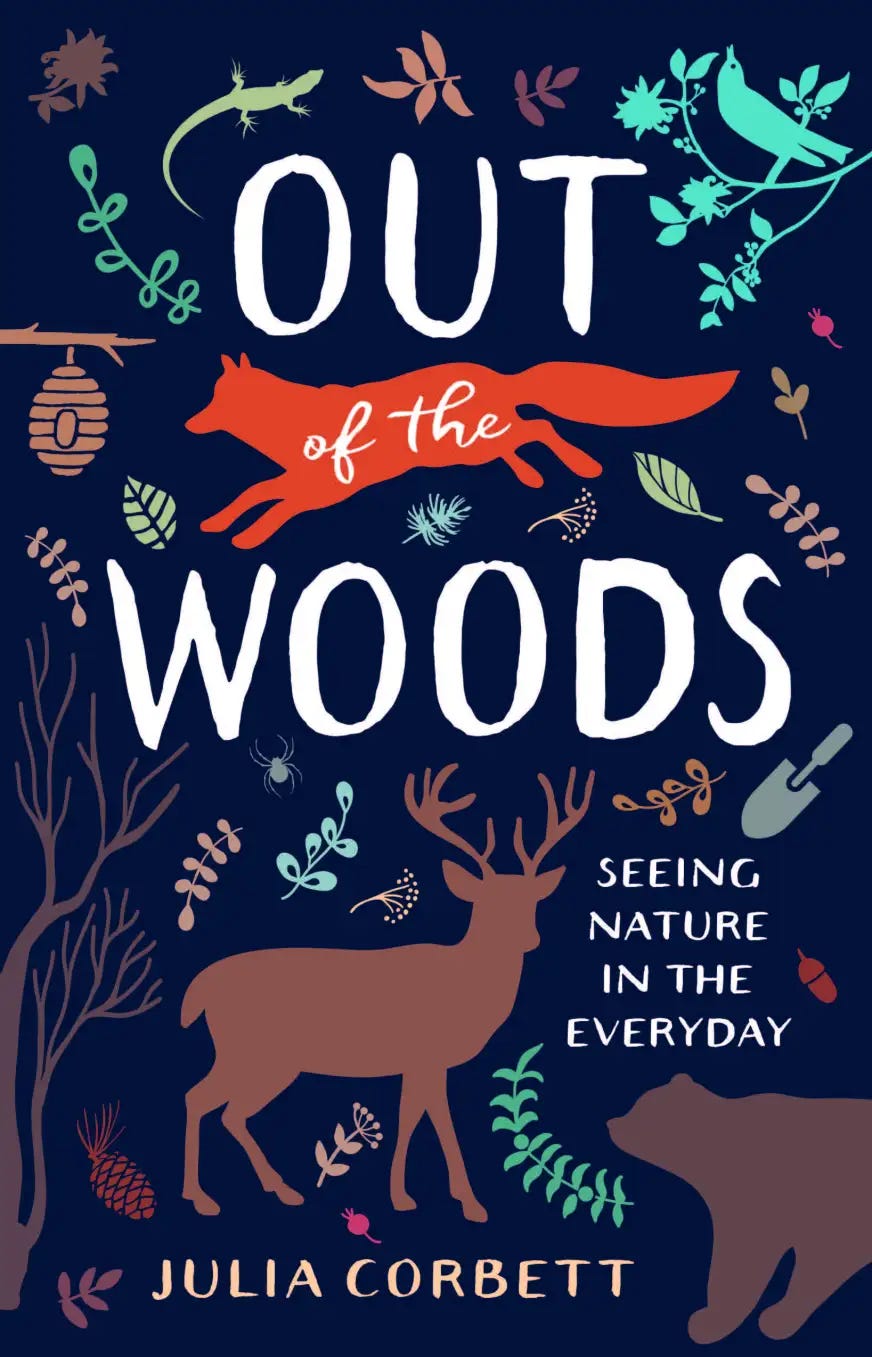Wild Ones #18: Environmental Communication Digest
Julia Corbett on media 'guard-dogs', a free workshop on nature storytelling, 'The deep Anthropocene, and more!
Hi everyone, welcome back to Wild Ones, a bi-weekly digest by me, Gavin Lamb, about news, ideas, research, and tips in environmental communication. If you’re new, welcome! You can read more about why I started Wild Ones here. Sign up here to get these digests in your inbox:
Environmental Communicator Spotlight 🔆
Julia Corbett is a Professor in the Department of Communication and Environmental Humanities Graduate Program at the University of Utah. Corbett’s research explores two broad areas in environmental communication:
First, she explores how social conflict and cultural change manifest in nonfiction essays and books about human relationships with the environment, with a particular focus on breaking through ‘climate silence’ through innovative art and science communication projects.
Second: another area of her research explores the many social, political, and economic factors that influence media coverage of environmental issues such as climate change and wildlife conservation. As Corbett puts it,
“My perspective holds that mass media are less a “watchdog” of the public interest than a fairly cautious business that closely watches the existing power structure for clues as to what’s “newsworthy” and important. This makes the media more often agents of social control (“guard-dogs,” if you will, of the existing power structure) than champions of social change.”
I first learned about Julia Corbett’s research in environmental communication after reading her foundational book in the field: Communicating Nature: How We Create and Understand Environmental Messages (2006, Island Press).
One of the takeaways I get from Corbett’s work is that environmental communication is not just about more effective communication about environmental problems and how to solve them, but reenvisioning how we think about communication in the first place– as a fundamental medium for creating new experiences for people. As Corbett writes,
“Communicate a positive vision, give me a direction, and enable direct experience with the natural world throughout my life. Experience can be a far better teacher than any amount of talking.”
Explore more of Julia Corbett’s work:
Corbett is currently working on a new book about climate communication, but I recommend also checking out her recent nonfiction book for a general audience: Out of the Woods: Seeing Nature in the Everyday
Read some of Corbett’s academic publications here:
Read her nonfiction essay Robotic Iguanas about two environmental communication scholars visiting a jungle-themed restaurant in Utah. And check out some of her other nonfiction essays here
Courses and Workshops 🔭
Law and Political Economy 101 (October 8th, 2020): While the course explores many issues beyond environmental communication, one of the instructors is Jedediah Britton-Purdy, who has written on topics important to environmental communication (like framing, values, and narrative) from a legal perspective, so I thought I’d share it here. Here is a brief description:
“The Law and Political Economy (LPE) Project is teaming up with the American Constitution Society (ACS) to offer an online course introducing students to LPE analysis…We live in an age of rising inequality, deep racialized and gendered injustice, hollowed out democracy, and climate catastrophe. Is legal thought today adequate to these challenges – and if not, how must it change?”
NEA Big Read Writing Workshop: Storytelling techniques in nature and science writing with Amy Stewart (October 17, 2020):
“In this one-hour workshop, author Amy Stewart will explore how to use storytelling methods in nonfiction writing, including plot, character, drama, setting, and conflict. She’ll discuss how those techniques can help bring the natural world to life, and answer your questions about the writing process. This class is open to anyone with an interest in nonfiction writing, with a particular emphasis on nature, science, and the outdoors.”
News 📰
“The Deep Anthropocene. '“A revolution in archaeology has exposed the extraordinary extent of human influence over our planet’s past and its future”
The World’s Sustainable Development Goals Aren’t Sustainable, by Jason Hickel. “There are big problems with the United Nations’ most important environmental metric.”
Climate change-induced Drought Paradox threatens water availability in the Alps. A story from the Yale Environment Review (YER), a student-run review that provides weekly updates on environmental research findings.
Research 📚
Special issue of Environmental Communication: ‘Communicating gene editing: Agriculture, humans, and the environment.’ Guest editors: Dominique Brossard and Dietram A. Scheufele
‘How Celebrities’ Green Messages on Twitter Influence Public Attitudes and Behavioral Intentions to Mitigate Climate Change’ by Sejung Park, faculty of Communication, John Carroll University. She writes, “This research adds to the growing body of literature on the role of celebrities as emergent spokespersons in climate advocacy using Twitter.”
‘Nature, nationalism and neoliberalism on food packaging: The case of Sweden’ by Helen Andersson, Senior Lecturer in Media and Communications Studies at Örebro University, Sweden. Here’s an excerpt:
“I investigate a sample of Swedish food packaging, and show how the nature represented evokes associations established systematically by governments building up nationalist imagery associated with social democracy, openness, freedom, responsibility, equality and fairness. I argue that at a time when Sweden is moving to the right politically, becoming a model neoliberal society, such representations, used for marketing purposes, help communicate a banal sense that Sweden is very much as it always has been.”
Death by a thousand spills: How corporate branding and media strategies downplay the risk of offshore oil spills in Canada’ by Dwayne Avery, Assistant Professor of English at Memorial University. Here’s an excerpt:
“On 15 November 2018, Newfoundland experienced its largest oil spill. The disaster saw the SeaRose platform disperse 250,000 litres of oil into the Atlantic. Despite the accident’s unprecedented nature, Husky Energy (the company responsible for the spill) minimized the public’s perception of potential ecological risks by transforming the disaster into an everyday fact of life. Focusing on Husky’s mediation of the spill, this article shows how Husky’s visual representation of small offshore spills erases their actual impact as cumulative environmental hazards.”
Ideas 💡
13 New Environmental Books to Motivate Action: “Most of the 13 books on this month’s list offer powerful advice and lessons from experience. Several authors tell us horror stories of things we should never let happen again, while a few offer stories of wonder that remind us of the natural world we need to save. All of them should help motivate readers and help keep them moving forward toward a better planet — even in these tumultuous times.”
“A Message From the Future II: The Years of Repair” “is an animated short film that dares to dream of a future in which 2020 is a historic turning point, where the lessons of the Covid-19 pandemic and global uprisings against racism drive us to build back a better society in which no one is sacrificed and everyone is essential…The cast of narrators from around the world includes Tometi, Emma Thompson, Gael García Bernal, and the Nigerian poet and activist Nnimmo Bassey.”
Holding Patterns: “Sand, dust, and sandstorms in China” (podcast). Jerry Zee, an assistant professor at the Princeton Environmental Institute and the Princeton University Department of Anthropology, discusses his idea of holding patterns.
He develops the idea based on his research examining how Chinese scientists, engineers, and bureaucrats communicate the future of two desertification emergency zones in northern China.
I admit Zee’s notion of holding patterns is a challenging idea, but it got me to think about how governments around the world define and communicate environmental crises to the public in order to achieve different agendas for economic development.
According to Zee, holding patterns are:
“techniques of environmental management shaped by earthly temporalities and aimed at holding the unruly time-spaces of moving sand in place. Sand’s motion and stabilization become the physical substrate for new modes of political fortune-telling, sometimes spelling out endings in the anticipatory spectacle of buried cities, but sometimes also providing the architecture for regenerative ecological futures.”
Writings from my desk ✍️
My co-authored chapter ‘Posthumanism and Its Implications for Discourse Studies’ was just published in the Cambridge Handbook of Discourse Studies.
By critiquing stories about human relationships with nature that are built on Western notions of ‘human exceptionalism’ – the idea that humans are separate from and superior to the natural world – the idea of posthumanism offers us a useful philosophical toolkit for finding and telling new stories about human-nature relationships that shed light on our deep interdependence with the wider natural world.
If our current global ecological crisis unfolding all around us tells us anything, it’s that we desperately need new stories to tell that don’t conceal, but reveal our multifaceted interconnection to and interdependence with animals, plants, ecosystems, and the planet we all inhabit together and depend on for survival.
There’s a lot more to unpack in this idea of posthumanism, but I’ll probably share more about this idea in future digests, especially as it relates to improving our environmental communication, storytelling, and advocacy!


Thanks so much as always for your interest in my work! If you enjoyed this post, let me know what you thought. If you didn’t, what can I improve? Feel free to leave a comment or share with others:)
- Gavin





